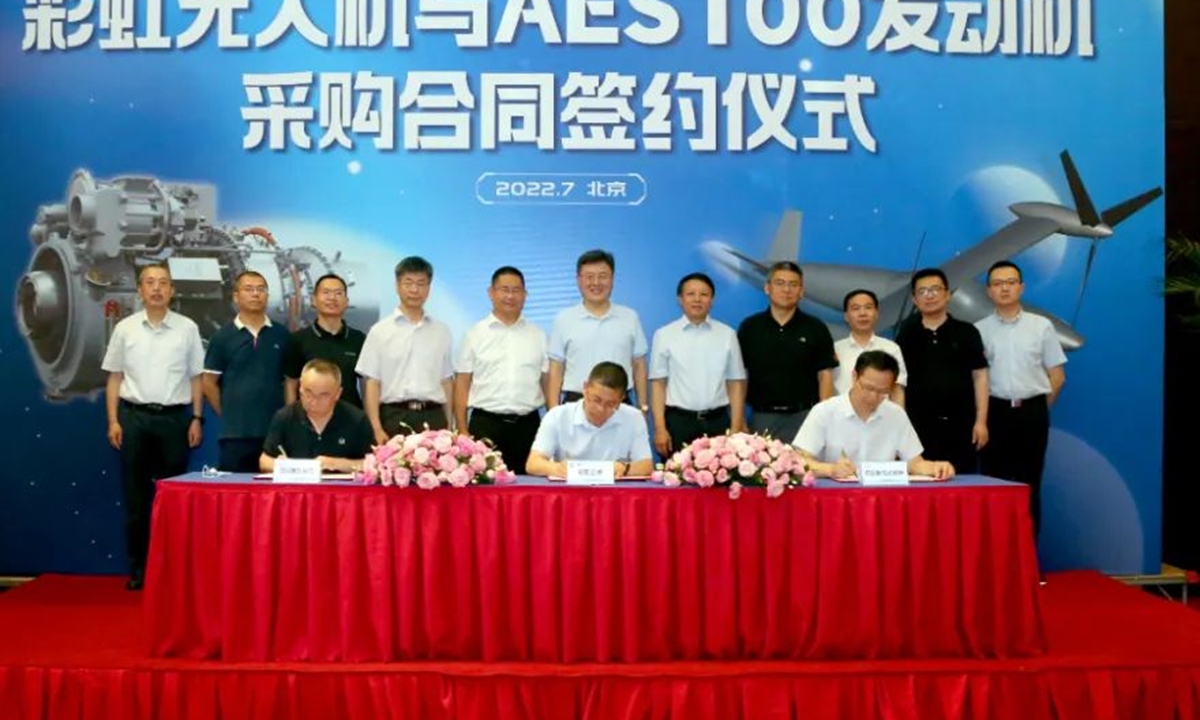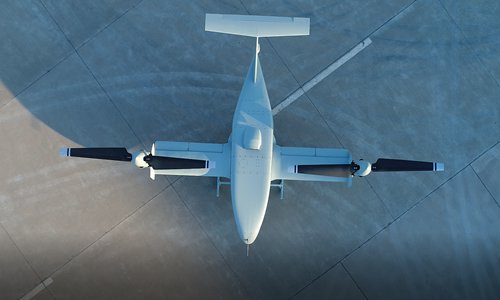
A procurement contract signing ceremony seeing the CH large tilt-rotor drone to be equipped with the AES100 turboshaft engine is held in Beijing on July 1, 2022. Photo: Screenshot from WeChat account of Aero Engine Corporation of China

Photo of a CH-10 tilt-rotor unmanned aerial vehicle, a new unmanned aerial vehicle integrating helicopter and fixed-wing aircraft technology Photo: Courtesy of the Chinese Academy of Aerospace and Aerodynamics
With a procurement contract signed recently, China's latest CH large tilt-rotor drone will get a domestically developed turboshaft engine, giving the aircraft advantages in terms of efficiency and reliability in transport missions, developers said on Monday.Independently developed by the Aero Engine Corporation of China, the AES100 turboshaft engine has found its first user in the CH large tilt-rotor drone, the Xinhua News Agency reported on Sunday.
This type of drone is suitable for transport and supply delivery missions, the Global Times learned from the CH UAV company on Monday.
A tilt-rotor aircraft fuses technologies of a helicopter and a fixed wing aircraft, allowing the aircraft to vertically take off and land in helicopter mode and cruise at a fast speed in fixed wing aircraft mode. The US-developed V-22 Osprey is a typical example of a tilt-rotor aircraft, observers said.
The AES100 is a 1,000 kilowatt-class, civilian-grade advanced turboshaft engine characterized by its high efficiency, long lifespan, high reliability, high power reserve and good expansibility, which makes it China's first such engine with full intellectual property that is competitive on the global market, Xinhua said.
A single AES100 engine can provide sufficient lift for a helicopter with three to four tons of takeoff weight, and two AES100s would be enough to power a helicopter with five to six tons of takeoff weight, the report said.
The development of the AES100 started in 2016, and then a helicopter equipped with two AES100s carried out the engine's first flight in July 2021, Xinhua reported, noting that the engine is still undergoing tests and being further improved in terms of lifespan, structural integrity, blade tolerances, anti-icing and fire-proofing.
The AES100 is also expected to spawn turboprop, turbofan and hybrid power variants, as the base turboshaft version will be developed into a series of engines, Xinhua said.
The CH-10 tilt-rotor drone made its public debut at Airshow China 2018 held in Zhuhai, South China's Guangdong Province, but it is not specified if the CH tilt-rotor drone to get the AES100 engine is the CH-10 or another type of aircraft. According to a computer-generated imagery of the aircraft released by Aero Engine Corporation of China on its WeChat account on Saturday, it looks different from a CH-10, observers said.
The CH-10 is a 350 kilogram-class armed reconnaissance drone that can accompany ground forces or naval ships for reconnaissance, detection, communications relay, search, target identification and relay guidance missions, according to data available at the air show.




